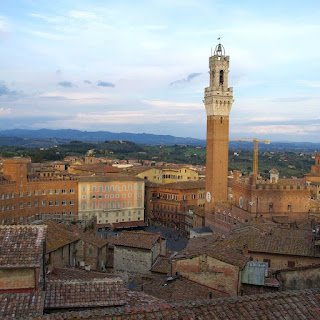Born Enea Silvio Bartolomeo Piccolomini to a soldier, he was one of 18 children (many of whom did not live long). He worked at the family farm until the age of 18, when he left to study at Siena, where he settled as a teacher. In 1431 he left teaching to be secretary to a bishop who was on his way to the Council of Basel, but changed jobs when that bishop ran out of money. He then went to Scotland on a secret mission, where he had a dalliance and fathered a child, who died young. He described Scotland as "wild, bare and never visited by the sun in winter."
Back in Basel, he was offered a diaconate, but disliked the obligation of abstinence. He was sent to Strasbourg, where he fathered another child (who died at 14 months). Later, at the court of Holy Roman Emperor Frederick III, he was named court poet for his cleverness and facility with language. While there, it is believed that he observed events that were turned into the "Tale of Two Lovers."
Enea did not care much for morals or strictness, but he realized that the way to power lay in the Church. His diplomatic skills working for Pope Eugene IV impressed those around him, so Eugene's successor Nicholas V made him Bishop of Trieste, and later Bishop of Siena. Now he wanted to advance, and desired to become a cardinal. He thought his chance came in 1455, but then Pope Calixtus III wanted to promote his own nephews first, and so Enea did not become a cardinal until 1456.
That meant, however, that he was part of the papal conclave on 10 August 1458, right after Calixtus died. Enea did his best to work his diplomatic skills among the cardinals and, although there were many with more experience and better ethical reputations, he managed to gather the votes so that a second ballot elected him unanimously.
According to his own writing, he did not rise above the desires of the flesh, but he did not neglect papal duties, and was keen on spreading Christianity, calling for a crusade against the Turks, who had taken Constantinople in 1453 and were now a strong presence in the Eastern Mediterranean.
Politics makes strange bedfellows, and successful Crusades sometimes required allying oneself with potentates you would not normally work with. Pius reached out to a voivode ("chief military leader") of a region in Romania called Wallachia, whose position north of the Turks would make him a helpful ally in surrounding them. Tomorrow, I'll talk about the link between Pius and a few other people mentioned in this blog, and then about his alliance with someone who had never before been mentioned: Dracula.
See you then.


